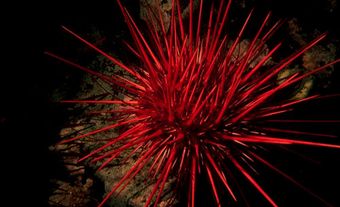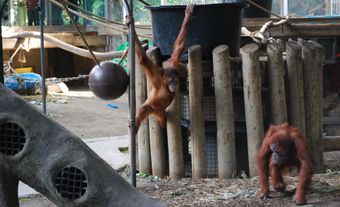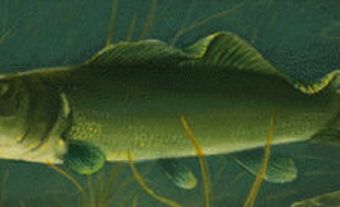
Vertebrates are bilaterally symmetrical animals with an internal skeleton of bone or cartilage consisting of, at least, a vertebral column and skull. The eyes (if present) and olfactory and feeding structures are always grouped in a distinct head region at the front of the body. At some stage, or throughout life, there is a series of gill slits in the anterior portion of the digestive tract called the pharynx. The gill slits pass from the interior of the pharynx to the outside and are supported by skeletal pharyngeal bars or arches in their walls. Usually there are also appendages assisting in movement and manipulation of the environment. These range from the median fins and tails of fishes to the specialized arms and hands of humans. The body covering may range from smooth, mucus-covered skin to a solid shell of bony armour, or to insulating fur or feathers.
Evolution
The earliest evidence of vertebrates consists of fragmentary fossils of 2 groups. Tiny, toothlike structures called conodonts belong to small, soft-bodied, wormlike animals, the Conodonta. Conodonta were probably part of the marine plankton community from the late Cambrian period (489-501 million years ago) to the late Triassic period (200-237 million years ago). The conodont fossils are the remains of dentinelike structures that were located in the mouth cavity of the Conodonta, some possibly on a protrusible tongue. Fragments of the external armour of jawless fishes are also known from the late Cambrian period.
Vertebrates apparently remained rare, scattered and limited to jawless fishes until the appearance of the first jawed fishes in the late Silurian period (418-424 million years ago). In the next 58 million years, during the Devonian period, all major groups of living fishes and the first tetrapods (amphibians) appeared.
The first amniotes (animals with a shelled terrestrial egg) appeared at the beginning of the Pennsylvanian period (about 314 million years ago). These fossil deposits contain the earliest ancestors of both modern reptiles (including birds) and mammals, which have followed separate evolutionary pathways since that time. Fully differentiated mammals date from the late Triassic period (200-237 million years ago). Birds, which evolved from dinosaurs, make up the youngest group of terrestrial vertebrates. Archaeopteryx, the oldest known bird, appeared in the late Jurassic period (142-157 million years ago).
Aquatic, fishlike vertebrates comprise 5 of the 9 principle evolutionary lines and nearly 25 000 of the more than 48 000 living species of vertebrates. This fact probably reflects the greater age of fishlike groups and the relative stability of marine habitats over long periods, compared to freshwater or terrestrial habitats. Among terrestrial vertebrates, reptiles, with about 6200 living species, have shown the widest variety of body plans and adaptations, but birds have the highest numbers, with about 9700 living species. Mammals have about 4800 living species and amphibians over 4300 living species.
Physiology
Vertebrates attain the largest sizes of all animals. They are more capable of efficient, rapid, sustained movements and have complex body organizations. These characteristics are interrelated and derive from the basic vertebrate body plan. The internal skeleton provides the necessary strength to anchor muscles and support the body, and is proportionally lighter than the external skeletons or shells of invertebrates. It allows for growth without the periodic moulting of a rigid external skeleton, and it increases the mechanical efficiency of muscles.
Vertebrates are able to regulate their physiological processes. All (except hagfish) regulate the dissolved salt concentrations and water content of their bodies. They also exert some control over their body temperature, either by selecting environments in which they can gain or lose heat as required (ectothermy), as in fish, amphibians and most reptiles; or by regulating metabolism to produce heat internally (endothermy), as in some fish (tuna and billfish), some reptiles (leatherback turtle and females of some python species), birds and mammals.
Large size and increased activity have led to the development of systems that allow vertebrates both to take in food, oxygen, water and salts and to excrete metabolic wastes more rapidly than invertebrates can. The gills of aquatic species, or lungs of terrestrial species, have large surface areas through which oxygen can be absorbed and carbon dioxide lost. The kidneys act as filters for the removal of metabolic wastes and the regulation of water and salt in the body. The digestive system includes mechanisms to increase efficiency of feeding and of breaking up food so that digestion will proceed more rapidly. The intestinal walls have large surface areas through which nutrients can be absorbed. Finally, the closed, high-pressure circulatory system carries substances throughout the body.
All of these must function together to produce the co-ordinated activity required for survival. Co-ordination is supplied by the central nervous system. It does this by using information from the surroundings, which is collected by the sensory system. Throughout vertebrate evolutionary history, changes in habitat or activity have been accompanied by changes in the structure and function of body systems.
An increase in swimming speed in a fish, for example, will cause increased size in muscles and the bones to which they are anchored. However, increased muscle activity also requires a greater flow of nutrients and oxygen, which affects the digestive, respiratory and circulatory systems. The increased production of wastes requires adaptation of the excretory system, and the changing needs of all of these together will affect the sensory and nervous systems, which supply information and co-ordination for the body as a whole.
Classification
Classification of this group has been in a state of flux over the last several years. The subphylum Vertebrata was originally divided into 2 superclasses. The Agnatha, or jawless fishes, included the extinct jawless fishes as well as the living lampreys (40 species worldwide; 11 in Canada) and hagfish (30 species worldwide; 3 in Canada), and the Gnathostomata, which included all jawed vertebrates. More recent studies have placed the hagfish in a group of their own, the Myxinoidea, and grouped the lampreys plus all other vertebrates in the superclass Craniata, based in part on the presence of a cranium enclosing the brain.

 Share on Facebook
Share on Facebook Share on X
Share on X Share by Email
Share by Email Share on Google Classroom
Share on Google Classroom



